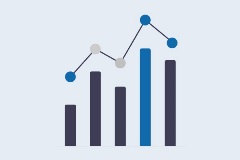
FAO DATA Explorer Beta
The “FAODATA explorer” is FAO’s new dissemination platform to access, filter, explore, download and share FAO statistics. The platform is currently a beta version as it is under development and will gradually be populated with existing FAO statistics on food, agriculture, nutrition, fisheries and aquaculture currently disseminated through FAOSTAT and FishSTAT .
Note to users: As for now, FAODATA explorer (Beta version) includes SDG data of the 21 indicators under FAO custodianship, also disseminated in FAOSTAT and the UN Global SDG Database.
Your feedback and suggested improvements on the new platform are welcome.
Please contact: [email protected].
SDG PROGRESS ASSESSMENT
Access data on the 21 SDG indicators under FAO custodianship at the global, regional and country levels.
Indicators under FAO custodianship
Indicators for which FAO is a contributing agency
BULK DOWNLOAD
Related publications
Related links
External links
- SDG Global Database
- UN Data Commons for the SDGs
- Official list of SDG indicators
- Metadata repository
- Data collection and focal points
- Voluntary National Reviews









